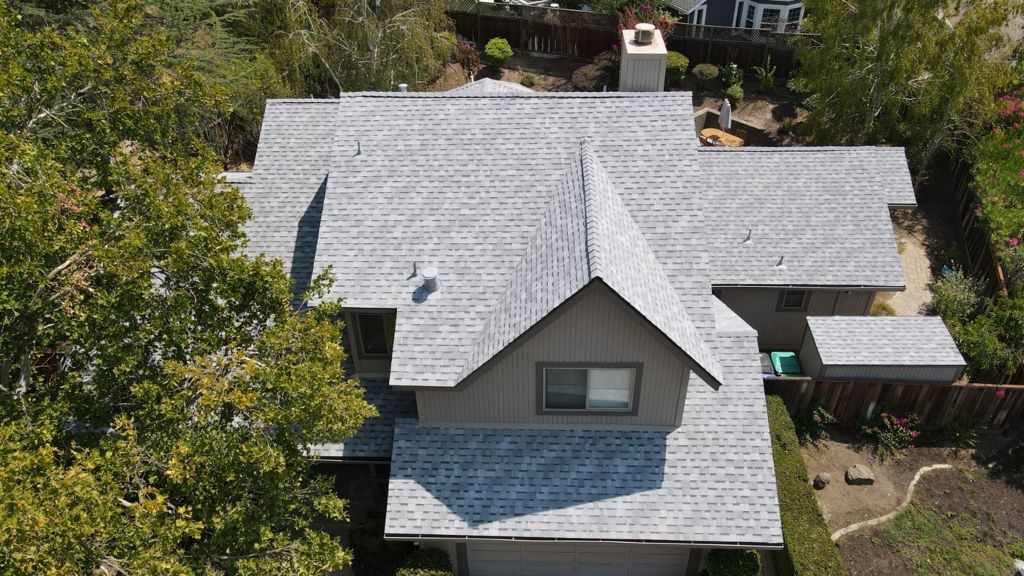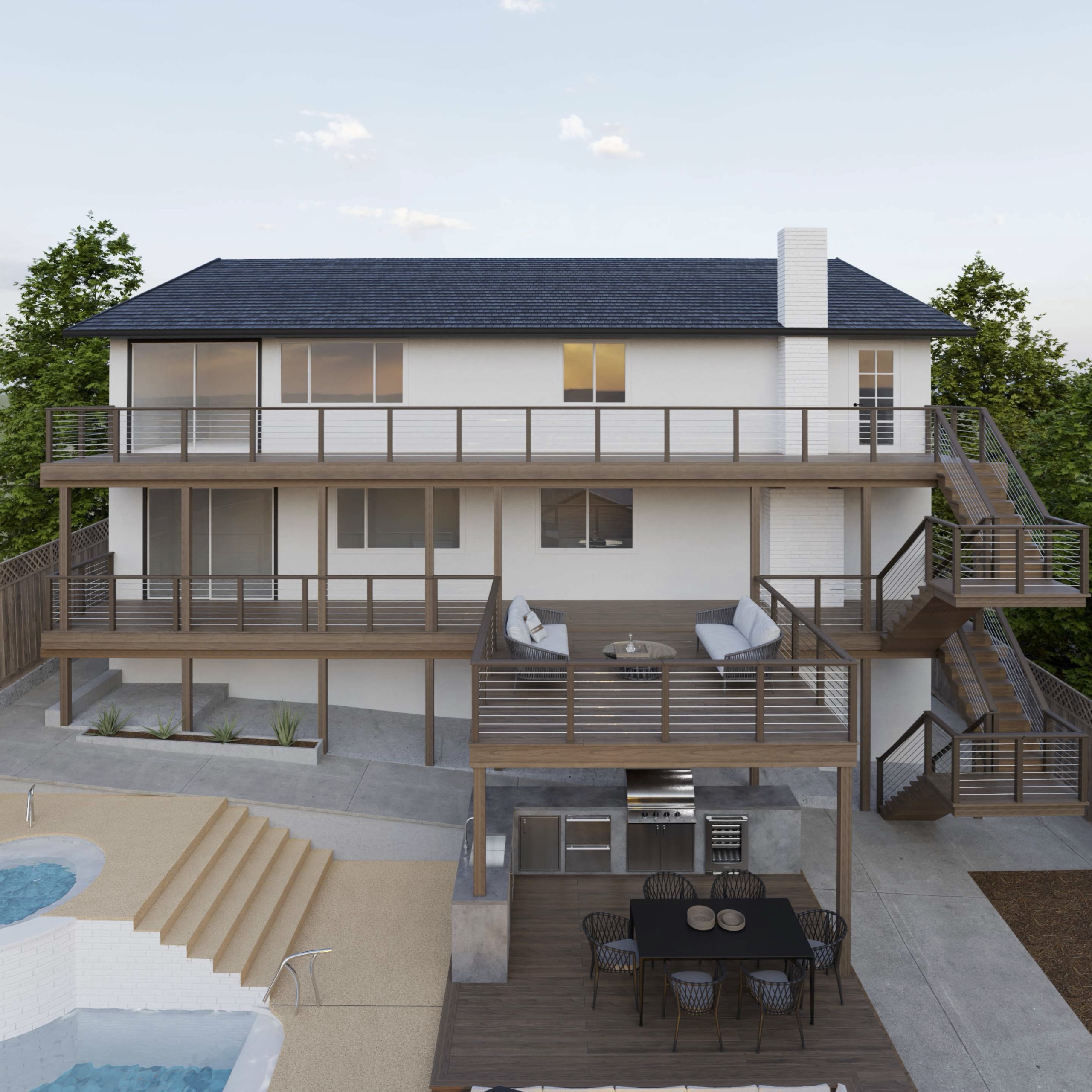If you’ve been thinking about adding Accessory Dwelling Units, more commonly referred to as ADUs, then you’re not alone. ADUs are also often referred to as In-law suites, Granny Flats, Carriage or Guest Houses, Backyard Cottages, Tiny Homes, and Garage Apartments. These types of additional housing spaces have become an increasingly popular solution for homeowners looking to add more living space, generate rental income, or accommodate family members. With housing in high demand across the Bay Area, ADUs offer a flexible and practical way to maximize property value.
And if you’ve been thinking about adding an ADU, then you may also be asking yourself “How Many ADUs Can I Have On My Property?” The number of ADUs allowed on a single property varies depending on local regulations. In this post, we’ll explore the general ADU rules across the Bay Area and dive into specific guidelines for cities like San Francisco, San Ramon, Oakland, and Concord. While every piece of land is different and there are many considerations for local guidelines, this post will point you in the right direction to find out how many ADUs you can have on your property.
Types of ADUs to consider
When it comes to ADUs, there are several types to consider, each with its own benefits, depending on the layout of your property and your specific needs:
- Detached ADUs: These are stand-alone units separate from the primary residence, often located in the backyard. Detached ADUs provide the most privacy and independence, making them ideal for rental units or guest houses.
- Attached ADUs: An attached ADU is physically connected to the main home, either as an addition or built onto an existing structure. This type of ADU can share some amenities, such as plumbing and electrical systems, which can reduce construction costs.
- Conversions: Most often a garage conversion, these are a popular option for homeowners with unused garage space. Garage conversions turn an existing structure into a fully functioning living unit. This option typically costs less than building a new detached ADU since the structure is already in place.
- Junior ADUs (JADUs): A Junior ADU is a smaller unit (up to 500 square feet) located within the main home, often converted from a bedroom or other space. JADUs must include a small kitchenette and can share a bathroom with the primary residence.
Each of these ADU types offers different advantages depending on your goals and the size of your property, but also regulations that differ from city to city.
City-Specific Guidelines for How many adus you can have on your property in the Bay Area
The permit process for building an ADU varies across Bay Area cities, with each municipality having its own set of regulations, fees, and timelines. While California state law sets a general framework for ADUs, local jurisdictions can add specific requirements that homeowners must navigate to ensure compliance with zoning, safety, and building codes.
How Many ADUs Can I Have on My Property in San Francisco?
San Francisco allows for ADUs in most residential zones, with some limitations based on density and building codes. Property owners can typically build one ADU and one Junior ADU per lot, but ADUs are often subject to stricter requirements regarding historic districts, seismic safety, and fire codes. Additionally, ADUs in multi-family buildings may have different regulations depending on the number of units. Parking requirements are relaxed, particularly in transit-rich areas, making ADUs more feasible for urban properties.

How Many ADUs Can I Have on My Property in San Ramon?
In suburban areas like San Ramon, the number of ADUs allowed on a property is influenced by lot size and zoning. Most single-family properties are allowed to add one detached ADU and one Junior ADU. However, larger lots may offer more flexibility in terms of size and placement. San Ramon also requires that ADUs comply with setback and height restrictions, and parking requirements may apply unless the property is located near public transit.
How Many ADUs Can I Have on My Property in Oakland?
Oakland’s regulations make it relatively easy for homeowners to add ADUs to their properties, especially as the city looks to increase housing options. Like many cities in California, Oakland allows one ADU and one Junior ADU per lot, with additional allowances for converting existing structures, such as garages. Oakland also has more lenient parking requirements, particularly for ADUs near public transit or within walking distance of amenities. Additionally, the city offers fee waivers and incentives for affordable ADUs.
How Many ADUs Can I Have on My Property in Concord?
Concord allows both ADUs and Junior ADUs on most single-family and multi-family properties, with regulations similar to other Bay Area cities. Homeowners can typically build one ADU and one Junior ADU, as long as the property meets the minimum lot size requirements. Concord also imposes height limits and setback regulations, particularly for detached ADUs. The city encourages the development of ADUs to address the housing shortage, and parking requirements may be waived for properties near public transportation.
Challenges and Considerations of Having ADUs in the Bay Area
While ADUs offer many benefits, there are several challenges and considerations homeowners must keep in mind before starting a project:
- Parking Requirements: Although some cities in the Bay Area have relaxed parking regulations, particularly for properties near public transit, many areas still require additional parking spaces when building an ADU. This can be a challenge for properties with limited space.
- Setbacks and Lot Size: Depending on the size of your lot and local zoning laws, you may face restrictions on where you can place an ADU. Setback regulations, which dictate how far the ADU must be from property lines, can limit the available space for building. Smaller lots may also have restrictions on the total allowable square footage for an ADU.
- Utility Connections: Adding an ADU often requires new or upgraded utility connections, including water, sewer, gas, and electricity. These costs can add up, particularly for detached ADUs, which may require separate meters or significant plumbing and electrical work.
- Permit Process and Fees: Navigating the permit process can be time-consuming and costly. Each city has its own requirements, fees, and timelines, and missing a step in the process can delay the project. It’s crucial to understand local regulations and work with professionals who are familiar with the process in your area.
- Construction Costs: Building an ADU can be expensive, with costs varying depending on the type of ADU, materials, and labor. Detached ADUs are typically more expensive than attached units or conversions due to the need for separate foundations and utility connections. Budget overruns are common, so it’s important to plan for unexpected expenses.
- Neighborhood and HOA Restrictions: In some cases, homeowner associations (HOAs) or neighborhood covenants may impose additional restrictions on ADUs, limiting your ability to build or regulate the size, design, and placement of the unit.
Understanding these challenges ahead of time can help you plan more effectively and avoid potential roadblocks in the process of adding an ADU to your property.
Conclusion
Building an ADU on your property in the Bay Area can provide significant benefits, from increased property value to additional income or housing for family members. While regulations vary from city to city, understanding the local rules and permit processes is essential to ensuring a smooth project. Regardless of where you are in the Bay Area, planning ahead and working with professionals familiar with local ADU requirements will help you make the most of your investment and navigate any challenges along the way. With the right preparation, your ADU can become a valuable and functional addition to your property.
Want some professional advice on adding ADUs to your property? Contact us today at Green Group Remodeling and we will help you turn your extra space into an ADU!

